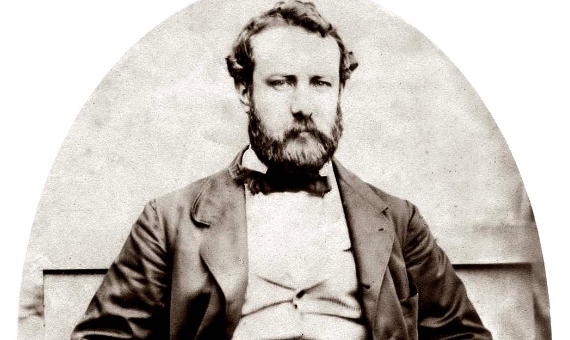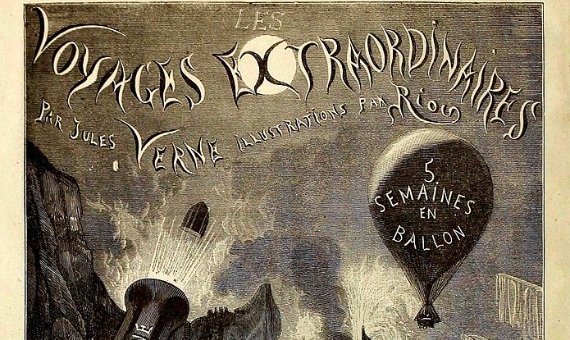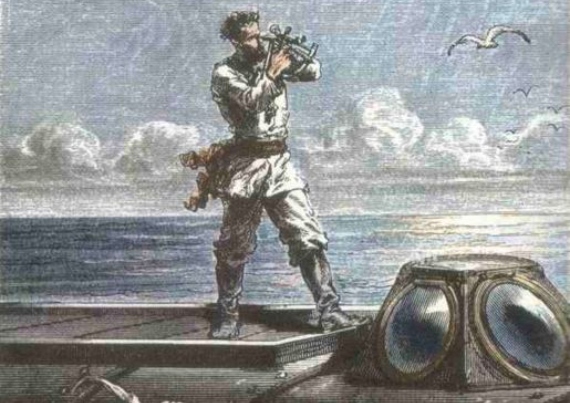The oft-repeated cliché when introducing a well-known figure is that the person needs no introduction. But if there is a select list of personages whose name need not be accompanied by other details, and whose full name need not even be mentioned, Verne is undoubtedly one of them. And yet, the fabricated persona can end up overshadowing the real person: in contrast to the Verne known as the father of science fiction, prophet of the future and enthusiast of technological progress, there is another, more real Verne who warned against the dystopia of uncontrolled progress, and in whose works—some of the lesser known ones—he championed a vision of the future that might have seemed strange for his time, but which now brings to mind a very contemporary concept of the tomorrow we want today: sustainability.
On the surface, there seems to be little to explain about the world’s second most translated author, after Agatha Christie and surpassing William Shakespeare. The immortal fame of Jules Gabriel Verne (8 February 1828 – 24 March 1905) is attested to by the fact that his first name has been translated into other languages, a privilege reserved for popes, kings, saints and A-list historical figures. But in recent decades, scholars have come to point out that the popular Verne is at odds with the real Verne, perhaps because the author himself was also somewhat of a contradiction in his own right.
The father of the “science novel” genre
To begin with, this man who usually appears on any list of the fathers of science fiction never had or pursued a scientific education. Many of the founders and leading figures of this genre had a direct relationship with science, such as Wells, Asimov and Clarke, or with technology, such as Heinlein and Gernsback. Verne, however, studied law, his father’s profession, although he never practiced it. But at the same time, he remained very attentive to the advances of his time and documented them meticulously for his novels.
In his youth, and determined to make a living as a writer, Verne developed a special attraction to travel and adventure literature. He conceived the idea of creating a new genre, the “science novel,” which catered above all to his passion for geographical exploration. This approach matched that of the editor of the magazine Musée des familles, Pierre-Michel-François Chevalier, who published his first articles and stories. Verne’s choice of subject matter, which the public liked, also won over the man who was to become his publisher, Pierre-Jules Hetzel. Hetzel read his first novel, Five Weeks in a Balloon, and published it in 1863.

From then on, the writer was contracted by Hetzel to serialise his novels in his magazine Magasin d’Éducation et de Récréation under the title Voyages extraordinaires. The vast majority of Verne’s novels, including all his most popular ones, would be published in this way in the magazine before appearing in book form. And all of them were oriented in a similar direction: the fiction of travel and exploration. According to Hetzel, Verne’s novels were intended to convey everything science knew about the history of the universe in general. In an interview he gave in his 66th year to McClure’s Magazine in 1894, Verne basically shared this vision, but clarified that, for example, Five Weeks in a Balloon was not a story about aerostatic technology, but about Africa. “Geography is my passion and my study,” he said.
“No, I cannot say that I was particularly taken with science,” Verne confessed in that interview. “Indeed, I never had been; that is to say, I have never practically studied or experimented in science. But while I was quite a lad I used to adore watching machines at work.” Thus, the scientific and technological element in his work is provided by the fact that the author was a fan of deep and rigorous documentation. “I may say that I have never studied science, though in the course of my reading I have picked up a great many odds and ends which have become useful,” he said. His habit of taking notes on cards that he organised and kept for reference when writing is well known, and he also avidly read scientific bulletins, even dictionaries and encyclopaedias to understand the science concepts he was interested in dealing with.
From technological optimism to scepticism
Thus, for many decades, scholars of Verne and his work have argued about his status as both a science fiction author and a technological prophet; science and technology were for him a medium, as the globe was for him to narrate a romantic exploration of Africa. In his 1988 book Jules Verne Rediscovered: Didacticism and the Scientific Novel, Arthur B. Evans, professor of modern languages at DePauw University (Indiana, USA) and an expert on Verne and science fiction, wrote that everything we thought we knew about the author is false—including the idea that his books were of poor literary quality and written for a young audience. According to Evans, Verne never wrote science fiction, although his fiction popularised science, and all the technology described in his books already existed or was almost possible with the knowledge of his time.
“Further, Jules Verne was not unreservedly pro-science,” Evans wrote. The expert explained that Verne started out as a technological optimist and a firm believer in the benefits of science and later shifted to a more sceptical stance, warning of the dangers of unbridled and dehumanised progress. Half of Verne’s work, according to Evans, reflects this change of attitude.

nterestingly, this more sceptical stance was already reflected in one of his earliest novels, Paris in the Twentieth Century, written in 1863. It was so pessimistic and suspicious of technological progress that Hetzel rejected it, and it was not published until 1994. In the bleak novel, Verne imagined Paris in 1960 in a dystopian society, dominated by technology and business and disdainful of culture and art. It is, without doubt, a very different Verne from the one we are used to.
But even in that diatribe against technology, the French genius introduced numerous advances that later became reality: underground passenger train systems and high-speed trains powered by compressed air, internal combustion engines, elevators, image telegraphs (the fax?), war machines operated by remote control, electric calculators that could send messages to each other remotely (computers and the Internet?), wind energy, electronic music and even pornography as mass entertainment, among many other prescient predictions. But over all this hovered the “Demon of Electricity” that haunts the protagonist.
And while this more unfamiliar Verne warns against the risk of overwhelming and dehumanising scientific and technological progress, he developed the same theme in another of his lesser known works. The Begum’s Fortune (1879) depicted the contrast between two cities, one mechanised, industrial and warmongering, and the other pacifist, social and environmental, as expressed in today’s terminology. The latter favoured health and environmental innovations, such as passive thermal insulation or machines that eliminated carbon from chimney smoke.
A prophet of sustainable development
These are not the only nods in Verne’s work to technologies that prioritise what today we would call sustainability: in The Mysterious Island (1875) he proposed the use of what we now know as green hydrogen, obtained from the electrolysis of water for use as fuel, and water as “the coal of the future” for when “the deposits of coal are exhausted.” And of course, it is well known that the Nautilus in Twenty Thousand Leagues Under the Sea (1870) was an electric submarine from which marine research was conducted; for novelist and critic Margaret Drabble, the work anticipated the ecology movement.

Of course, to top it all off, the author imagined 20th-century Paris facing catastrophic climate change that would plunge Europe into a little ice age, while in The Purchase of the North Pole (1889) he railed against the use of geoengineering to change the earth’s climate to exploit polar coal deposits. But to present the French author as an environmental visionary or a pioneer of sustainability would be to invent another character as false as the one scholars have already denounced.
And at the same time, to ignore his small contributions in this field would also be unfair. In his book The Nature of Tomorrow: A History of the Environmental Future (2021), City University of New York history professor Michael Rawson explores how the historical dream of infinite growth propelled by science and technology has led to environmental disaster, and cites Verne as an unexpected early proponent of the existence of environmental limits to human ambition.
But have we already mentioned that Verne was a contradictory character? And this is not just because an author who found travel to be his main source of inspiration scarcely travelled at all, except for sea voyages in his boat. In that 1894 interview, after having made it clear that Five Weeks in a Balloon was not a novel about flight technology, he almost immediately went on to say that he had no faith in the possibility of ever steering balloons. He added: “It is a mere dream, though I believe that if the question is ever to be solved it will be with a machine which will be heavier than the air.” Nine years later, Orville and Wilbur Wright made the first powered and controlled flight in a heavier-than-air machine.
Javier Yanes
@yanes68
Comments on this publication